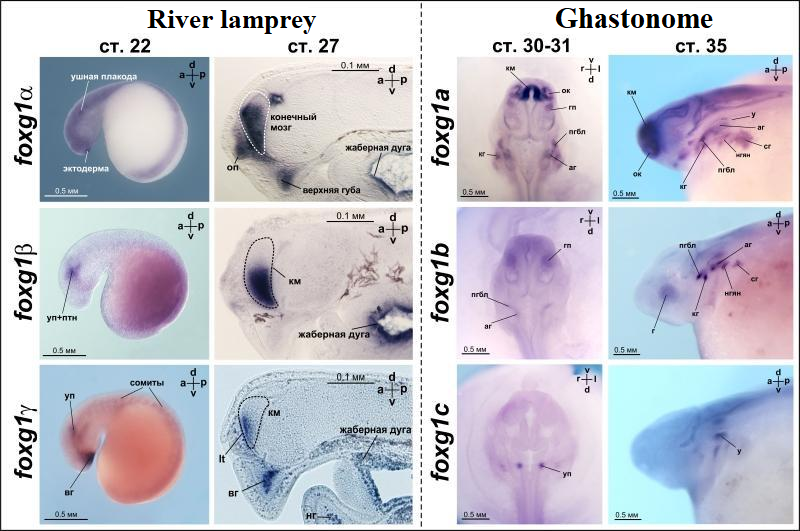
Researchers from the M.M. Shemyakin and Yu.A. Ovchinnikov Institute of Bioorganic Chemistry, A.N. Severtsov Institute of Ecology and Evolution (IEE RAS), All-Russian Research Institute of Fisheries and Oceanography, and N.K. Koltsov Institute of Developmental Biology have described for the first time three paralogues of the Foxg1 gene in the oldest living vertebrate, the river lamprey.
Previously, it was believed that most vertebrates and their closest relatives have only one foxg1 gene, which is a molecular marker of the forebrain and related structures. However, the results of the study, published in the journal Frontiers in Cell and Developmental Biology, showed that lampreys, representatives of the oldest group of vertebrates, have several copies of this gene.
To determine the relationship of these genes in lampreys and other vertebrate groups, various comparative studies of these genes were conducted in lampreys and another ancient vertebrate representative, the sterlet (ghastonome). Analysis of foxg1 gene expression showed that in lampreys all three genes are expressed in the telencephalon, although their expression patterns differ, while in the sterlet there is only one foxg1a gene.
Thus, the presence of one foxg1 gene in higher vertebrates is not common to all vertebrates. Ancient groups such as cartilaginous, sturgeon, and bony fish usually have three foxg1 genes. Some representatives of these groups have two, and bony fish that have undergone additional genomic duplication have four.
The detected expression of foxg1 genes in the forebrain structures, sensory organs, and cranial nerves of lampreys and gnathostomes may indicate their important role in shaping the body plan of vertebrate morphological traits.
The researchers proposed two hypotheses: the emergence of three foxg1 paralogues in agnathans and gnathostomes could have occurred either as a result of two rounds of genome duplication in the common ancestor of vertebrates (hypothesis 2R), or as a result of the first common round with subsequent independent polyploidizations in two evolutionary lines (hypothesis 1R).
Data from the published article: Galina V. Ermakova, Alexander V. Kucheryavyy, Nikolay S. Mugue, Aleksandr V. Mischenko, Andrey G. Zaraisky, Andrey V. Bayramov, Three foxg1 paralogues in lampreys and gnathostomes—brothers or cousins? Front. Cell Dev. Biol., 02 January 2024Sec. Evolutionary Developmental BiologyVolume 11 - 2023 | https://doi.org/10.3389/fcell.2023.1321317
